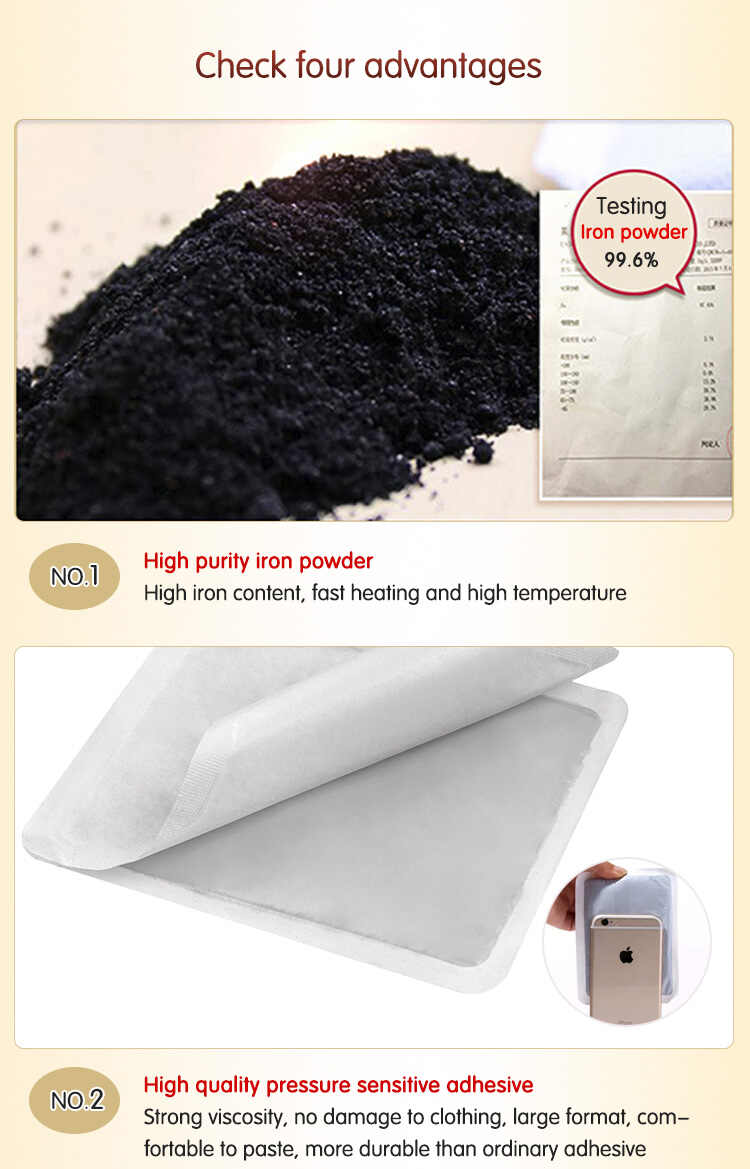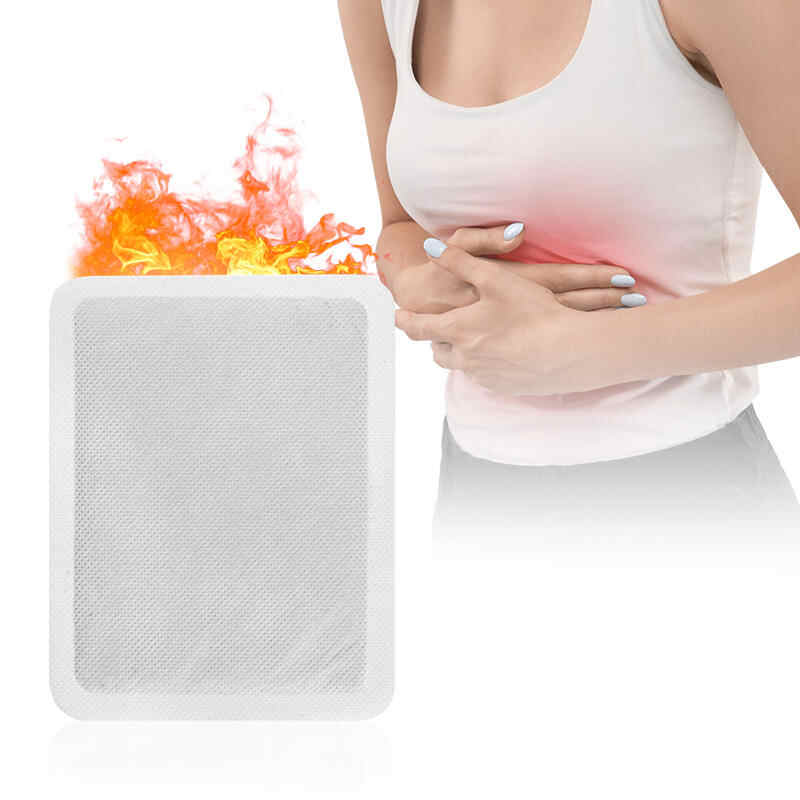How Do Custom Period Pain Relief Heat Pads Differ in QC Requirements?
In the fast-growing wellness and feminine care market, Custom Period Pain Relief Heat Pads have become an innovative and in-demand solution. As consumers increasingly seek natural, effective, and comfortable pain management options, more brands are entering the market through Period Pain Relief Heat Pad OEM and Private Label Period Pain Relief Heat Pad partnerships. However, one factor that distinguishes successful brands from others is Quality Control (QC) — the cornerstone of safety, performance, and customer satisfaction.
But what makes QC for customized heat pads different from standard products? Why should every Period Pain Relief Heat Pad Manufacturer adopt more advanced and precise QC processes for custom formulations and designs? This article explores the distinct quality control requirements of Custom Period Pain Relief Heat Pads and how leading OEM manufacturers ensure consistent product excellence.

1. The Growing Market for Custom Period Pain Relief Heat Pads
Today’s consumers expect more than just warmth and comfort — they want personalized solutions. This shift drives demand for Custom Period Pain Relief Heat Pads tailored for different pain levels, body types, and materials. Brands are increasingly partnering with Period Pain Relief Heat Pad OEM suppliers to develop:
Adjustable temperature heat pads
Longer-lasting thermal technology
Eco-friendly or biodegradable materials
Pads infused with herbal or natural ingredients
Discreet and wearable designs
However, customization introduces new variables — each requiring specific QC testing to ensure performance, safety, and reliability. Unlike mass-produced generic heat pads, custom OEM heat pads must undergo additional layers of testing due to variation in materials, heating duration, and adhesive types.
2. Why Quality Control Is Crucial in Custom OEM Manufacturing
Quality control ensures that every Period Pain Relief Heat Pad OEM product meets both regulatory standards and consumer expectations. In custom manufacturing, even small deviations in material consistency or temperature control can significantly affect performance or safety.
For instance:
A slight variation in heat generation rate could lead to skin irritation.
Incorrect adhesive quality may cause poor skin adherence.
Inconsistent ingredient blending in herbal pads could alter efficacy.
Therefore, QC isn’t just a production formality — it’s an essential brand protection measure. A reliable Period Pain Relief Heat Pad Manufacturer implements rigorous QC systems to safeguard every product batch from potential risks.
3. Standard QC Practices in Heat Pad Manufacturing
Before exploring how Custom Period Pain Relief Heat Pads differ, it’s important to understand the baseline QC procedures in standard heat pad production.
Typical QC checkpoints include:
Raw Material Inspection
All incoming materials (nonwoven fabric, heating powder, adhesives) are inspected for purity, moisture, and compliance with material safety standards.Temperature Uniformity Test
Pads are activated and monitored to ensure heat release remains within the specified safe range (typically 40–60°C).Adhesion and Flexibility Test
Adhesive strength and pad flexibility are checked to confirm comfortable use without skin irritation or detachment.Shelf-Life Testing
Samples undergo accelerated aging to assess performance stability over time.Microbial and Toxicity Testing
Pads are tested for bacterial contamination and chemical residues to ensure dermatological safety.
While these are standard across most Period Pain Relief Heat Pad Suppliers, customization introduces new QC dimensions that go beyond these baseline checks.
4. How QC Requirements Differ for Custom Period Pain Relief Heat Pads
Customization expands the complexity of production and therefore demands a more detailed QC approach. Below are the major areas where Custom Period Pain Relief Heat Pad QC differs significantly.
4.1 Ingredient and Formulation Variability
When brands request heat pads infused with herbal extracts (e.g., ginger, mugwort, lavender), the Period Pain Relief Heat Pad Manufacturer must adapt QC to monitor ingredient stability and uniformity.
QC Differences Include:
Testing for active ingredient concentration to ensure consistency between batches.
Monitoring pH balance and moisture levels to prevent degradation of natural components.
Performing odor and color uniformity tests for consumer appeal and quality assurance.
4.2 Temperature Calibration for Different Designs
Customized pads often vary in size, shape, or target area (lower abdomen, waist, back). Each variation alters heat distribution. Therefore, Period Pain Relief Heat Pad OEM manufacturers must recalibrate temperature performance.
QC Adjustments Include:
Conducting thermal mapping tests to ensure even heat across custom shapes.
Validating peak temperature and duration curves for specific applications.
Using infrared imaging to detect hot spots or uneven heating.
4.3 Material-Specific Testing
Custom projects may require eco-friendly, biodegradable, or hypoallergenic materials. These new materials may behave differently under heat.
QC Focus Areas:
Material degradation tests to evaluate stability at elevated temperatures.
Skin compatibility and irritation tests for sensitive users.
Mechanical stress tests to ensure pad integrity during movement.
4.4 Packaging and Labeling Verification
Private label and custom packaging introduce branding and functional requirements that also impact QC. A Private Label Period Pain Relief Heat Pad must not only look professional but also ensure the packaging maintains product freshness and integrity.
QC Measures Include:
Seal integrity tests to ensure airtight packaging.
Printing accuracy checks for regulatory compliance (ingredient lists, warnings, usage instructions).
Durability testing to confirm packaging withstands shipping and storage conditions.
4.5 Compliance and Certification Standards
Customized products often target global markets, where regional standards vary. For instance, the EU requires REACH and CE compliance, while the U.S. may require FDA registration.
Thus, a leading Period Pain Relief Heat Pad Supplier must:
Conduct region-specific regulatory tests.
Maintain traceable documentation for each custom batch.
Provide safety and performance certifications (ISO 13485, GMP, MSDS).
5. The Role of OEM Partners in Ensuring QC Consistency
A professional Period Pain Relief Heat Pad OEM partner is not just a manufacturer — they are a quality assurance collaborator.
Reputable OEM suppliers integrate advanced QC systems from development to delivery, including:
Automated inspection systems for temperature and adhesive uniformity.
In-line defect detection to identify material inconsistencies.
Batch traceability software for precise record keeping.
An experienced OEM partner will also provide detailed QC documentation, including test reports and certificates of analysis, to support brand transparency and credibility.
6. Key Technologies Enhancing QC in Custom Heat Pad Manufacturing
Modern QC processes in heat pad production leverage advanced technology to achieve precision and efficiency.
6.1 Infrared Thermal Imaging
Used to visualize temperature distribution across the pad, ensuring even heating performance.
6.2 Moisture Content Analyzers
Measure moisture in raw materials to prevent early activation or uneven heating.
6.3 Automated Vision Inspection Systems
Detect physical defects such as cracks, contamination, or misalignment.
6.4 Digital Adhesion Testing
Ensures the adhesive backing adheres well without irritating the skin.
6.5 Stability and Aging Simulation Chambers
Recreate long-term storage conditions to verify product stability over time.
By integrating these tools, Period Pain Relief Heat Pad Manufacturers can maintain consistency even with high customization levels.
7. Quality Documentation and Traceability
Custom projects require detailed QC documentation to meet international standards. Each Custom Period Pain Relief Heat Pad batch should have:
Raw material certificates
Production logs
Test results for temperature, safety, and shelf life
Batch traceability numbers
These records allow both manufacturers and clients to track production history, ensuring accountability and transparency — a critical factor in OEM collaborations.
8. Challenges in QC for Custom Heat Pads
While customization attracts brand differentiation, it also increases QC challenges. Common issues include:
Material variability: Different suppliers mean different performance outcomes.
Small batch complexity: More tests per unit are needed for smaller custom runs.
Formulation instability: Herbal ingredients may oxidize or degrade faster.
Regulatory diversity: Different export markets require unique certifications.
To overcome these, a reliable Period Pain Relief Heat Pad OEM supplier must maintain flexible QC frameworks that adapt to each project’s technical requirements.
9. How Brands Benefit from Strong OEM QC Systems
Partnering with a Period Pain Relief Heat Pad Manufacturer with robust QC systems brings multiple benefits:
Enhanced Brand Reputation: Consistently safe and effective products build consumer trust.
Reduced Returns and Complaints: Proper QC minimizes product defects.
Regulatory Confidence: Documentation simplifies compliance for global markets.
Faster Market Entry: Reliable QC shortens approval cycles and supports scaling.
Essentially, quality control is the foundation of brand success in the competitive wellness product industry.
10. Selecting a Reliable Period Pain Relief Heat Pad OEM Partner
When choosing a Period Pain Relief Heat Pad OEM or Private Label Period Pain Relief Heat Pad Supplier, brands should assess the manufacturer’s QC capabilities. Look for:
ISO or GMP certifications
Comprehensive QC protocols for customization
In-house testing laboratories
Experience in women’s health and thermal therapy products
Transparent reporting and traceability
A trustworthy OEM partner ensures that every custom product aligns with both performance expectations and safety regulations.
Conclusion
Custom Period Pain Relief Heat Pads represent a growing frontier in feminine health innovation. However, with customization comes the responsibility of maintaining uncompromising quality. Unlike standard production, custom OEM manufacturing requires enhanced QC systems that verify material compatibility, temperature performance, packaging safety, and regulatory compliance.
A dependable Period Pain Relief Heat Pad Manufacturer integrates advanced testing, transparent documentation, and strict process control to ensure every product batch performs reliably and safely. For brands, this commitment to QC is not just a compliance measure—it’s a competitive advantage that builds long-term trust and market success.
Related Questions and Answers
Q1: What QC certifications should a Period Pain Relief Heat Pad Manufacturer have?
A: Look for ISO 13485, GMP, and CE certifications to ensure adherence to international safety and medical device standards.
Q2: How often should QC testing be performed in OEM production?
A: Ideally, QC checks occur at every stage — from raw material inspection to final product validation, ensuring full traceability.
Q3: What is the biggest QC challenge for Custom Period Pain Relief Heat Pads?
A: Ingredient and material variability, especially when using natural components or new eco-friendly substrates.
Q4: Why is temperature testing critical in heat pad QC?
A: It ensures consistent and safe heat distribution, preventing skin burns or ineffective performance.
Q5: How does a Private Label Period Pain Relief Heat Pad differ in QC needs?
A: Private label pads often involve unique packaging and branding, requiring additional verification for labeling accuracy and regulatory compliance.






